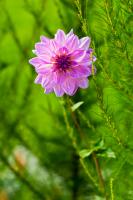Can You Add Chelated Iron to Water for House Plants?
If you're a proud owner of a houseplant, then you'll understand that it takes more than just water and sunlight to keep them healthy. While water and sunlight are undoubtedly essential, plants also require nutrients like nitrogen, phosphorus, potassium, and iron to thrive. Iron, in particular, is a vital component that aids in chlorophyll production, preventing the leaves from turning yellow or brown.
Chelated iron is a soluble powdered or liquid form of iron that's often used in gardening to provide iron to plants. Chelated iron can be added to the soil, but can it also be added to water for houseplants? The answer is yes, and here's why:
What is Chelated Iron?
Chelation is a process whereby a metal ion, like iron, is combined with a chelating agent, which acts as a stabilizer to form a stable, water-soluble compound. This compound is chelated iron. Chelated iron is easily absorbed by plants, making it an excellent source of iron for plants that suffer from iron deficiencies.
How to Add Chelated Iron to Water for Houseplants?
Adding chelated iron to water for houseplants is easy. First, choose a chelated iron fertilizer that's designed for houseplants. Then follow the instructions on the package for the correct dosage. Typically, you'll need around one teaspoon of chelated iron fertilizer per gallon of water. Dissolve the chelated iron fertilizer in the water and pour the solution into the soil around the plant's roots once a month.
It's essential to note that overuse of chelated iron can be dangerous to plants. Therefore, it's crucial to follow the instructions on the package carefully and never exceed the recommended dose.
Benefits of Adding Chelated Iron to Water for Houseplants
Adding chelated iron to water for houseplants has many benefits, including:
Preventing iron deficiency - Chelated iron is an effective way to prevent iron deficiency in houseplants.
Aids in chlorophyll production - Iron is essential in chlorophyll production, and chelated iron is readily absorbed by plants, making it an excellent source of iron.
Improves plant growth - Iron is a vital component in plant growth and development, adding chelated iron to water helps to deliver iron to the plant's roots, stimulating growth.
Conclusion
Can you add chelated iron to water for houseplants? Absolutely. Chelated iron is an effective way to prevent iron deficiency in houseplants, aids in chlorophyll production and helps improve plant growth. However, it's crucial to follow the instructions on the package carefully and never exceed the recommended dose. If you're unsure about adding chelated iron to water for houseplants, consult a gardening professional who can provide more information.

 how many times do yo...
how many times do yo... how many planted tre...
how many planted tre... how many pine trees ...
how many pine trees ... how many pecan trees...
how many pecan trees... how many plants comp...
how many plants comp... how many plants can ...
how many plants can ... how many plants and ...
how many plants and ... how many pepper plan...
how many pepper plan...






























